On Tuesday, Virginia and New Jersey will have their Election Day and count votes that have already been coming in for governor and other state offices. Watching intently with widened eyes will be the national media, which by poll-closing time may seem wild with anticipation.
Because these two states alone hold statewide elections one year after the presidential election, they have come to attract far more attention for these votes than they would otherwise receive.
Ranked 11th and 12th in population nationally, they account for a little over 5% of the nation. But they punch above their weight as the first statewide tests of a president's popularity after a national election. Interest tends to be most acute when a new president is serving his first year in office.
There has also been something of a tradition of these two states providing pushback on the party holding the White House and evidence of national political mood swings.
How the pendulum has swung against presidents
After the election of President Donald Trump in 2016, Democrats won the governorships in both Virginia and New Jersey in 2017. Both winners ran as critics of the new president.
Eight years earlier, one year after the election of President Barack Obama (who carried both states), Virginia and New Jersey chose Republican governors. Both these GOP stars of 2009, Bob McDonnell in Virginia and Chris Christie in New Jersey, harnessed voter concerns over the emerging health care law and other aspects of the new administration. Both would soon be mentioned as potential national candidates (Christie ran in 2016).
Eight years before that, following the election of President George W. Bush in 2000, Virginia chose Democrat Mark Warner for governor in 2001. Warner served a term as governor and moved on to the U.S. Senate, where he serves today. His successor as governor, Democrat Tim Kaine, won his term one year after Bush was reelected. Kaine now serves with Warner in the Senate and was their party's 2016 vice presidential nominee.
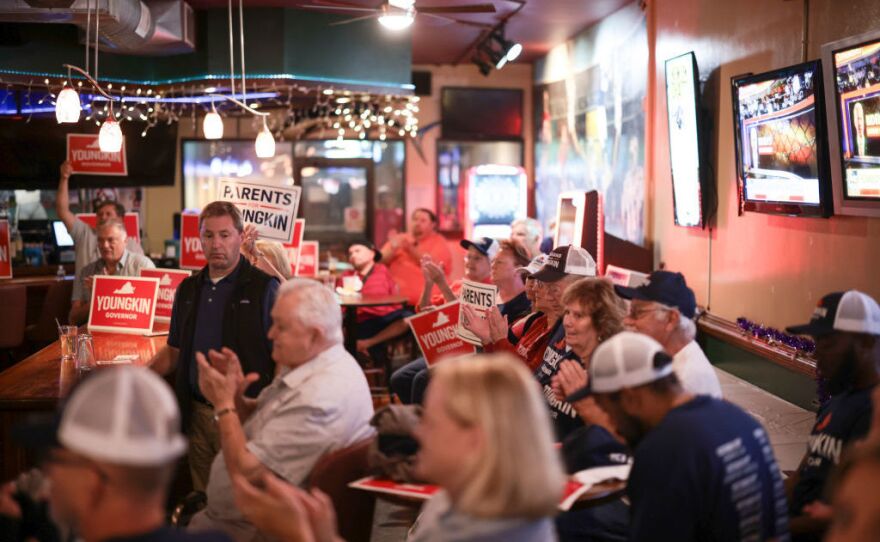
Going back to the Bill Clinton era, Virginia reacted to the return of Democrats to the White House by electing back-to-back Republican governors (George Allen in 1993 and Jim Gilmore in 1997), each following by a year a decisive Clinton presidential win.
Also in the Clinton years, New Jersey voted for the Democrat for president but promptly replaced its Democratic governor in 1993 with Republican Christine Todd Whitman, who also won herself a second term one year after Clinton won his.
And if Republicans thrived in Virginia in Clinton's time, Democrats did surprisingly well there during the long era of Ronald Reagan's dominance that preceded it. Starting in 1981, when Reagan was still in his inaugural year in office, Democrats won the governorship three consecutive times with Chuck Robb, Gerald Baliles and Douglas Wilder all serving full four-year terms.
Democrats are hoping to defy the trend
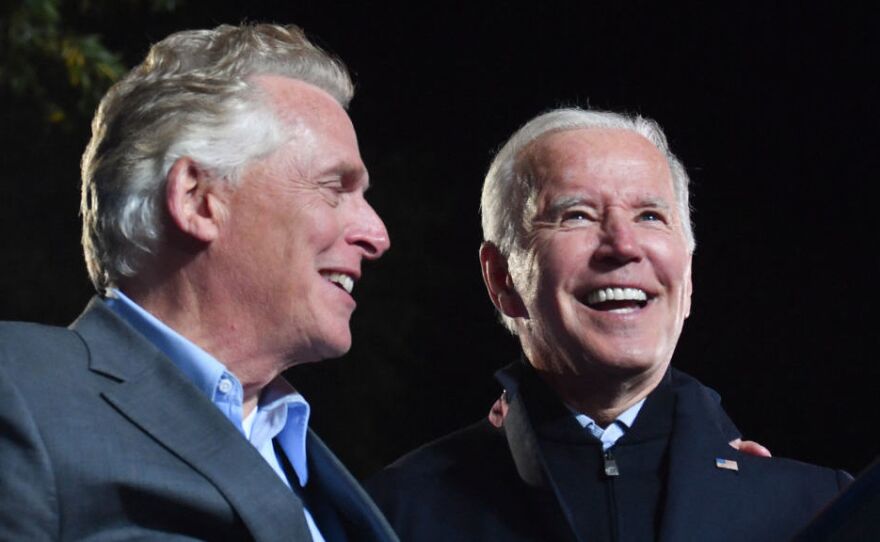
Because Virginia does not allow consecutive terms (a unique constraint), its current Democratic governor, Ralph Northam, is not on the ballot this fall. But his predecessor as governor, Terry McAuliffe, also a Democrat, is making a bid for a second term. He is hoping to defy the pendulum swing this year, as he did when he won his first term back in 2013, one year after Obama's reelection.
That was the only time since the 1970s that the winner of the Virginia governor's race was a candidate of the party holding the White House at the time.
Given his track record and the party's recent run of success in the Old Dominion state, McAuliffe's chances looked good in early summer, before the delta variant and vaccine wars caused the economy to slow and attitudes to sour. McAuliffe lost his lead in the polls and now looks no better than even money against Republican Glenn Youngkin.
A better bet to defy the partisan pendulum this year is New Jersey Gov. Phil Murphy, who still has a double-digit lead in late polling over Republican Jack Ciattarelli. Some polls show this race narrowing as well, but if Murphy were to hold on, he would be defying more than the one-year presidential pendulum. He would be New Jersey's first Democratic governor reelected in more than 40 years.
The last Democrat to get a second term in New Jersey was Brendan Byrne, for whom the Meadowlands Sports Complex in East Rutherford was originally named. Byrne did it in 1977, and since then incumbent Democrats Jim Florio and Jon Corzine were defeated, and Jim McGreevey resigned in the middle of his term. (Several incumbent Republicans have won second terms, however.)
Why this year is different from others
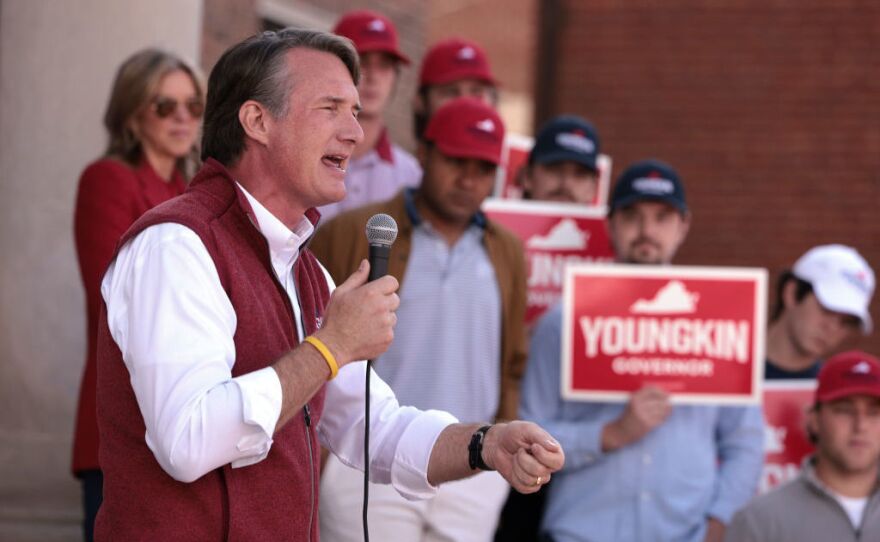
In 2021, of course, everything is at least a little different. That is partly due to the pandemic and all its personal, social and cultural disruptions. There is also the pervasive, uneasy sense that the 2020 election cycle never really ended. A president who leaves office but never concedes his defeat can have that effect.
Polls show most Republicans still say they believe Trump's false story about the election being stolen. All official tallies, recounts and court rulings have yet to alter that persistent belief.
But even those who are fooled by none of the allegations from Trump or his entourage still have to deal with the consequences of the inaccurate narrative.
That's why the freight that is typically loaded onto the Virginia and New Jersey votes is even greater than usual this time around. Biden may not be as high a profile or as powerful a presence as Trump or Obama were in their first years. Neither state's race has been especially focused on the new guy in the White House.
On the other hand, the persistence of Trump's political energy, manifest not only at his occasional rallies but in local protests of vaccine mandates or school curricula, remains a factor in politics at all levels.
Republican nominees in both states have been rather arm's length regarding the former president. His voters are their base vote, and they know it. The Democratic nominees, by contrast, are more likely to continue their critiques of the former president than they are to talk up the achievements of their own current president.
So some of the reporting rhetoric on election night will tend to focus on the former president, who continues to publicly toy with running for 2024. Trump is always a more compelling story, win or lose.
The national narrative after Election Day
Bottom line for 2021: There is no chance either state will match the margins by which Biden won them a year ago. The narrowing alone will be enough to sustain the story line of Democratic decline. Losing either or both of these races will surely be a four-alarm signal various media will amplify well into the night and for months to come.
But it may be too much to ask Tuesday night to be the Big Reveal, the guide to politics for the 2022 midterms and the 2024 presidential cycle.
Truth be told, the pendulum that has swung away from the president's party in the Virginia and New Jersey statewide races in years past has often swung back again by the next presidential round. That was the case in Obama's reelection in 2012 (following the GOP governorship wins in 2009) and also for Bush's reelection in 2004 (after the Democrats' wins in 2001) and Clinton's reelection in 1996.
What makes these two states special?
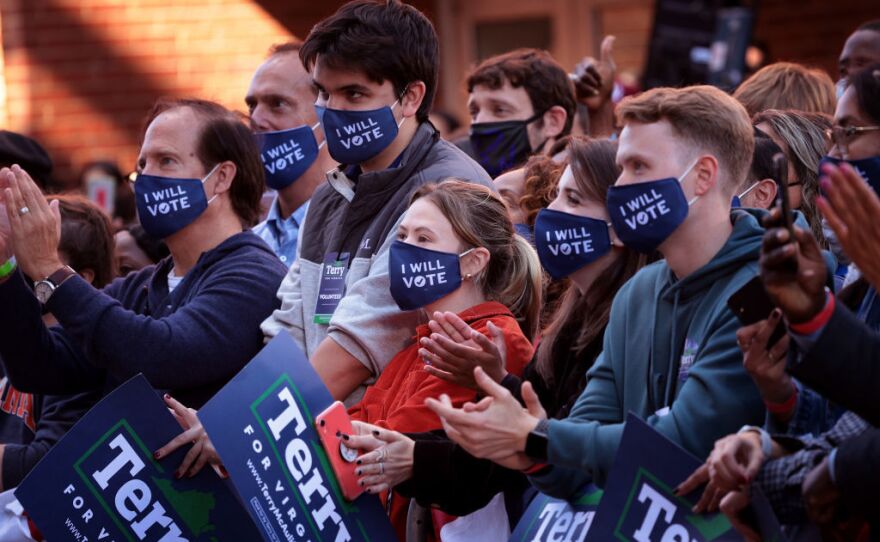
Perhaps the first question people ask about these Virginia and New Jersey contests is why they happen when they do. Most states now elect their governors in the midterm cycle halfway between presidential votes. About a dozen still have theirs on the same ballot with the presidential choice. And a few (Kentucky, Louisiana and Mississippi) wait until the third year of the presidential term.
But Virginia and New Jersey have the spotlight all to themselves in the first year of the term, and that has given them a salience in recent decades.
How did it happen? Virginia and New Jersey were among the original 13 states, of course, and as such oldies they have many venerable traditions. It would be charming to say both had cherished holding their gubernatorial votes a year after the presidential vote since the days of the founders. But in truth, both states adopted the practice generations later in response to practical political calculations.
In Virginia's case, the decision to elect the governor by popular vote of ordinary citizens did not come until the mid-19th century. That began with the commonwealth's new state constitution in 1851 and the elections that followed until the Civil War. In 1868, the complicated negotiations over a new constitution led to a requirement that the new pact be ratified by the voters, and that took until the subsequent summer. So it has been since 1869 that Virginia has followed this practice, and it had nothing to do with the presidential cycles.
In New Jersey, the shift to the odd-year ballot for state office came much later, in response to a more modern crisis. By the end of World War II, the Garden State had endured years of political corruption and other forms of high-dollar crime at the expense of the common citizenry.
A state constitutional convention took place in 1947 on the campus of Rutgers University and a new, somewhat reformist blueprint for the state's governance was created and adopted. It was approved by the legislature and governor of the day, and it included separating the state's elections from the federal election process in either presidential or midterm cycles.
The idea, as the Republican governor of that day was candid enough to admit, was to get the state officers' election separated from the enormous influence of national presidential politics — which had been dominated for four cycles by Democrat Franklin D. Roosevelt. Ironically, Republicans might have done better sticking with the presidential cycle in the short run, as the GOP's White House nominees won the state in the next three cycles (1948, 1952 and 1956).
Nonetheless, New Jersey has stuck to its guns ever since.
Effects comparable to Iowa and New Hampshire
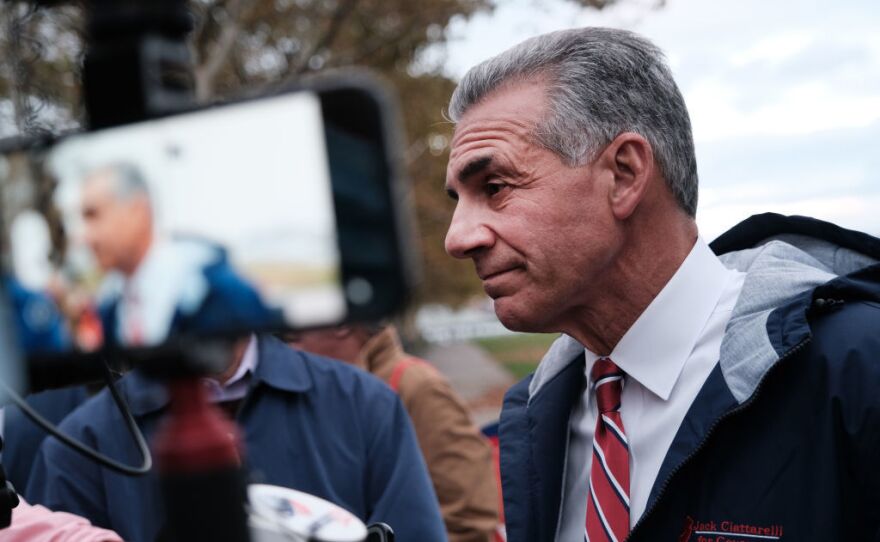
One way to think about it is that Virginia and New Jersey have become to the first year of a presidential term what Iowa and New Hampshire are to the fourth. The early caucus-and-primary combination of those two states has been known to elevate candidates for president in both parties, creating a special degree of interest in their outcomes.
But if these two early-voting states are sometimes cast as kingmakers, Virginia and New Jersey come along at the other end of the cycle as correctives. They are the typically that first round of real-world voting that brings a newly elected or reelected president back to earth.
Each of these two-state combinations tends to consider its own contribution in this regard as more substantial than the other's. And certainly any and all attributions of blame or credit in these matters can be disputed in the details. But each of these two pairs of states can claim to be real-world tests of voter sentiment at a sensitive moment in the political cycle.
Each has its own power to shape the landscape and script the conversation — as we anticipate them first, and then as we mull the results over time.
Copyright 2021 NPR. To see more, visit https://www.npr.org. 9(MDAzMjM2NDYzMDEyMzc1Njk5NjAxNzY3OQ001))







